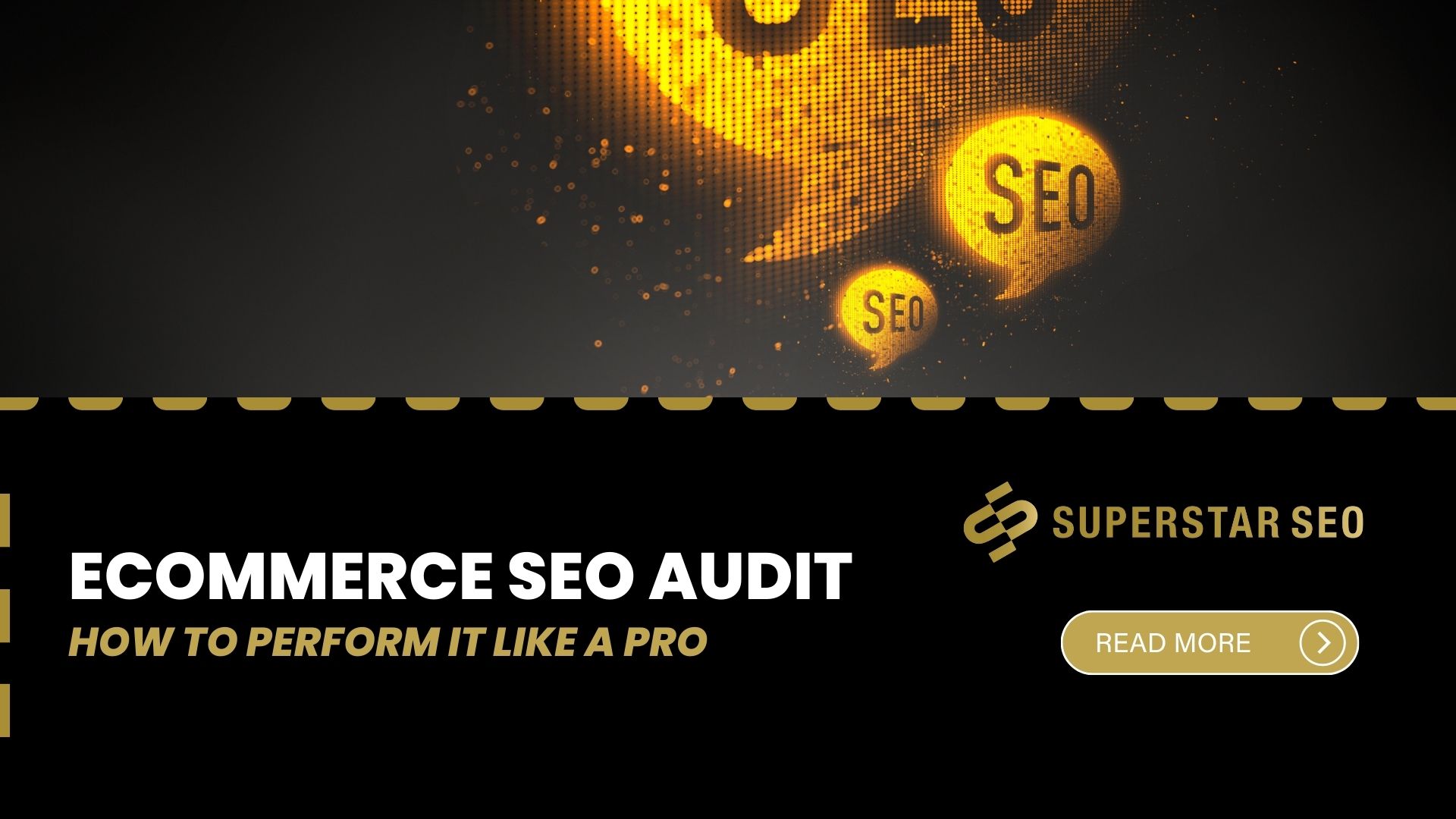eCommerce SEO Audit: How to Perform It Like a Pro
A successful eCommerce website needs to be engaging, user-friendly, and, most of all, search-engine-optimized to attract visitors who are looking specifically for what you’re selling. If you’re new to the world of SEO, an eCommerce SEO audit can seem like an overwhelming prospect without the right guidance.
The ultimate e-commerce SEO audit should provide you with the information you need to improve your website’s ranking across the major search engines, resulting in more traffic and more sales.
To perform an ecommerce site audit like a pro, here are some of the main steps you should follow…
eCommerce SEO Audit Services Include
Keyword research.
Site structure analysis.
HTTP / HTTPS suggestions.
Site speed analysis.
Technical SEO audit.
Off-page SEO audit
URL structure suggestions, etc.
But more important are the ones we have mentioned in this article.
Why Is an SEO Audit Important for eCommerce Sites?
SEO audits are important for both large and small eCommerce stores because they can help identify what your site needs in order to rank higher in the search engines.
For example, if your site is missing meta descriptions or has low-quality content, you may be at risk of not ranking as high as you could. An SEO audit checklist will help ensure that you do not forget anything and cover all the bases with your website.
eCommerce site revenue is projected to reach more than 8 trillion US dollars by 2026.

But the industry is also becoming highly competitive.
Shoppers use their mobile devices to compare costs or research deals and coupons. Actually, they use search engines every day.
51% of people have found out about a new product or company online by using the internet.
Moreover, according to a study by Hubspot, 23.6% of eCommerce orders are linked directly to organic traffic.
If you’re looking at the overall stats, you’ll see that organic traffic continues to be among the first sources of eCommerce revenues.
So, eCommerce SEO is not going anywhere anytime soon.
Now, let’s get back to the checklist. Most of the tips in here are about technical SEO, so it’s better to consult an expert if you want to see real results from your site.
eCommerce SEO Audit Checklist
1. Analyze Your Page Titles and Meta Descriptions
Ecommerce page titles and meta descriptions are a crucial part of your website’s optimization.
Meta descriptions are essential in maximizing click-through rates (CTR).
Although they are not directly considered a ranking factor, they influence the organic traffic you get.
Both the meta description and titles need to be relevant, compelling, and long (short) enough so they show up in search results.
To make sure you’re using these elements effectively, we recommend starting with this checklist (a checklist within a checklist – is this Inception?)
Does your title contain the target keywords you want it to rank for?
Is your title accurate and relevant?
Does it fit within 55-70 characters?
Is your meta description helpful and compelling?
Is it less than 160 characters?
Are you using H1 headings correctly?
Moreover, as an eCommerce business, make sure to include some incentives in the description.
For example, if you provide free shipping, or discounts, or any other perk, include them and attract users’ attention.
Also, ensure that your page titles, meta descriptions, and content are optimized with relevant keywords to improve your search engine rankings and attract the right audience.
2. Conduct a Site Crawl
An important step in any successful SEO audit is site crawl in your Google Search Console which is the process of examining every single page on your website and evaluating them for their search engine friendliness.
Your site crawl should include all the live pages and those that are either under construction or have been taken down.
The crawl will uncover any errors or problems in your website.

If you notice that Google can’t crawl or index pages on your website, check your robots.txt file and XML sitemap.
However, be mindful –There will be certain parts of your website that you don’t want crawled and indexed.
For instance, your test pages, thank-you pages, shopping cart pages, etc. they, don’t need to be crawled.
Regarding the XML sitemap, very large websites benefit most from an XML map.
And, eCommerce websites tend to be particularly extensive as they have many filter, category, and product pages.
As such, an XML sitemap is even more helpful in structuring your website for search engine bots.
Check for duplicate content across your eCommerce site, as it can negatively impact your search engine rankings and lead to penalties.
3. Evaluate Your Page Load Time
In order to rank higher in search engine results page (SERP), you need to have your page load time as low as possible.
When browsing sites, most people will click on the first few links they see and then move on if their pages are taking too long to load.
The goal is for your site’s load time to be under two seconds at all times.
You can use a tool like Google Pagespeed Insights to assess your website’s load time and see where you can make improvements.
Utilize Google Analytics to track your site’s performance metrics, helping you identify areas that need improvement during your eCommerce SEO audit.
Ecommerce SEO Audit FAQ
What is an ecommerce SEO audit?
An ecommerce SEO audit is a comprehensive evaluation of your online store’s website to identify issues that may be affecting its search engine rankings. The audit typically examines factors such as site structure, page speed, mobile-friendliness, keyword usage, content quality, and backlink profile. The goal is to uncover technical, on-page, and off-page SEO issues that could hinder your site’s visibility on search engines, ultimately affecting your sales and revenue.
Are SEO audits worth it?
Yes, SEO audits are worth it. They provide valuable insights into the health of your ecommerce site and help identify issues that could be limiting your search engine visibility. By addressing these issues, you can improve your site’s rankings, increase organic traffic, and ultimately boost sales. Regular audits ensure that your ecommerce SEO strategy is up-to-date and aligned with the latest search engine algorithms.
How long does an ecommerce SEO audit take?
The duration of an ecommerce SEO audit can vary depending on the size and complexity of the site. For a small to medium-sized ecommerce site, the audit process typically takes anywhere from a few days to a week. Larger sites with thousands of products and pages may require a more extensive audit, which could take several weeks to complete. The time also depends on the thoroughness of the audit and the tools used.
When should you conduct an ecommerce SEO audit?
You should conduct an ecommerce SEO audit:
Regularly: At least once or twice a year to ensure your site remains optimized.
After Major Changes: Following a site redesign, migration, or significant content updates.
When Traffic Drops: If you notice a sudden drop in organic traffic or sales, an audit can help identify the cause.
Before Peak Seasons: Prior to high-traffic periods, such as holiday shopping seasons, to ensure your site is in top shape to handle increased traffic.
Bottom Line
A complete eCommerce SEO audit checklist is essential for the success of your online business.
Simple as that.
With an eCommerce SEO audit, you’ll be able to identify any weaknesses in your website and fix them before it’s too late.





